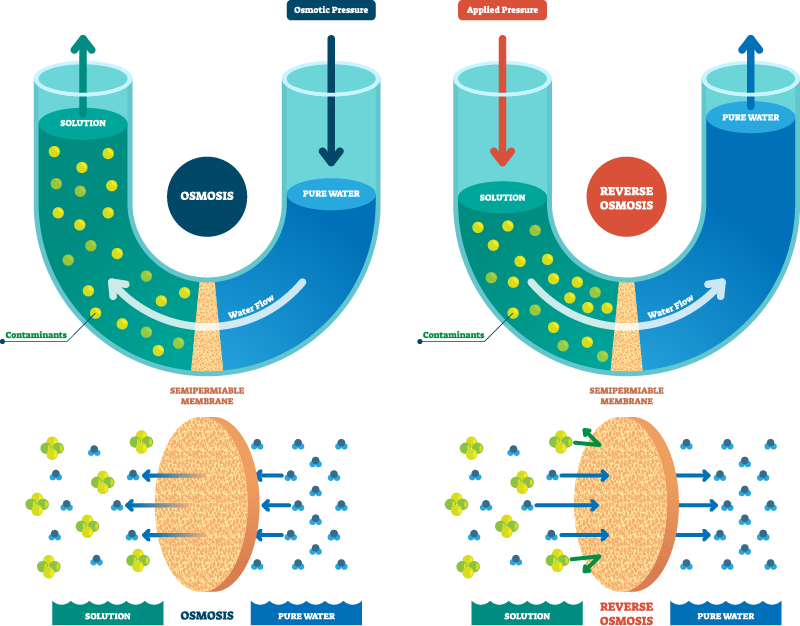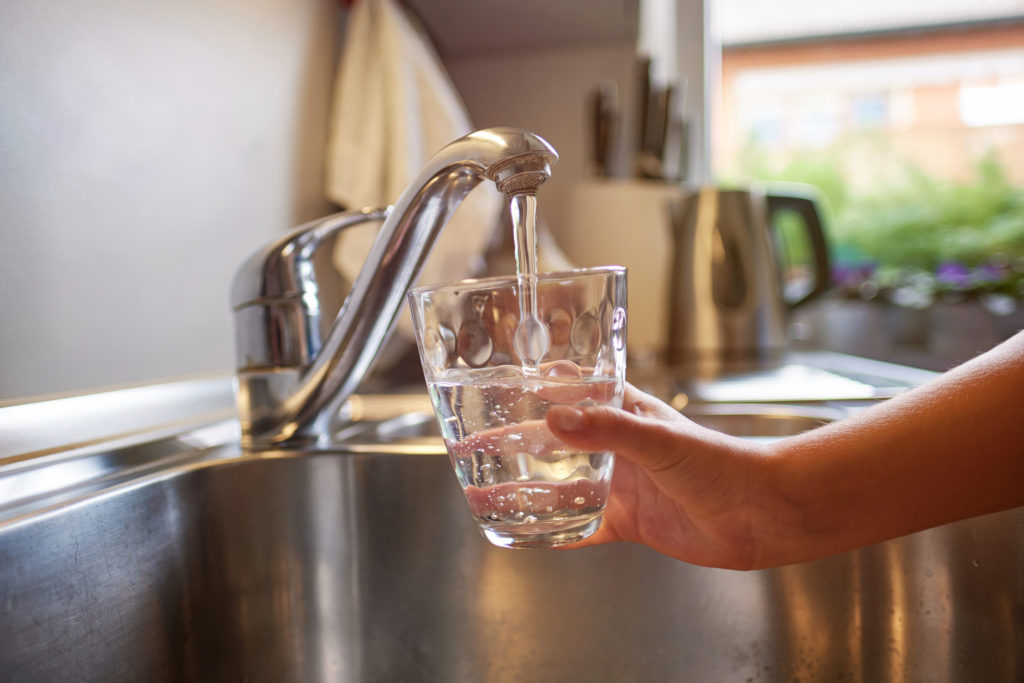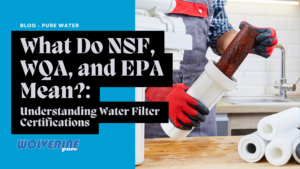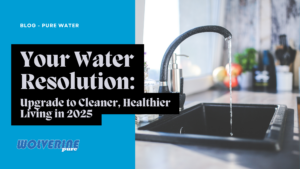Trying to figure out which water treatment system is right for you? Reverse osmosis systems are one of our most popular options to help your tap water taste fresh and clean. Here’s a brief look at how these systems work and some points to consider if you’re thinking about installing one in your home.
How does a reverse osmosis system work?
Typically, water in nature moves from low to high concentrations, or from areas with fewer particles to areas with more particles. In reverse osmosis filtration, pressure is used to achieve the opposite. Contaminated water is pushed through a sediment filter (to remove any larger particles), a carbon filter (to remove chlorine), and a semipermeable membrane (to filter out remaining contaminants), leaving pure clean water on the other side.

Reverse osmosis systems can be installed right at their point of use (such as under your kitchen sink) or as part of a whole-home installation. Wolverine offers two reverse osmosis systems:
- Our Pure Last Reverse Osmosis System, which helps remove contaminants such as arsenic, nitrates, sodium, copper, lead, some organic chemicals, and even the municipal additive fluoride.
- Our Pure Last Reverse Osmosis System with Alkaline Filtration. Alkaline water helps boost metabolism, enhance hydration, promote nutrient absorption, boost immune systems, increase energy, and can help detoxify the body.
What are the benefits of a reverse osmosis system?
There’s a reason reverse osmosis systems are one of our most popular water filtration options. They efficiently remove contaminants from your tap water, helping you feel confident that the water you are drinking is safe for your family and pets. Plus, having pure, fresh-tasting water flowing from your faucet helps you cut down on the cost of bottled water or water filter pitcher systems. In general, point-of-use systems tend to be more cost-effective and easier to maintain and clean, making them a great choice for many families.
Are there any downsides to a reverse osmosis system?
While point-of-use reverse osmosis systems are cost-effective (such as those installed at a kitchen faucet), they will only remove contaminants from that individual water source in your home. So while your kitchen tap water will taste fresh and clean, untreated water will still run through your other pipes and fixtures. Depending on the minerals present, this water can lead to long-term issues. To combat this, you can install a whole-home reverse osmosis system, but they tend to be more expensive because of the time and energy it takes to run all of your home’s water through the complex filtration system.
In addition, water quality challenges can drastically differ from region to region. The unique combination of minerals and contaminants affecting your home’s water quality may be better mitigated by another one of our other systems.
Want to learn more about our reverse osmosis systems?
We know it can be confusing to determine which water filtration system will work best for your home’s water. Schedule a FREE in-home water test today to learn exactly what’s affecting your home’s water quality. Then, chat with one of our friendly reps about a personalized water filtration system that will meet your home’s water quality needs. We’re proud to help our community enjoy pure, clean water.





